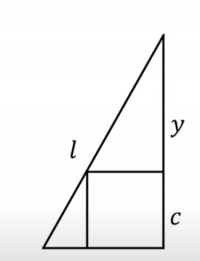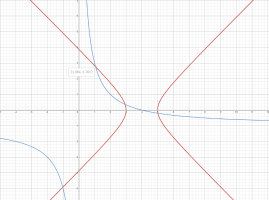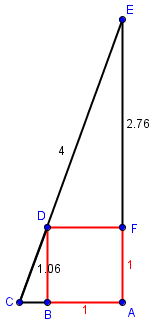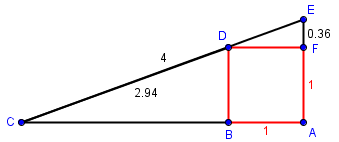What tool do you use to obtain the graphical representation of an equation?
In this case I used Desmos.
but can you elaborate how did you came up with the idea of substitution [imath]u = 2-x[/imath]?
Now that I think about it, it would have made more sense to suggest shifting the graph left 2 units by replacing x with u+2 so that u = x-2 rather than 2-x, which involves a reflection along with the shift; but either substitution results in this:
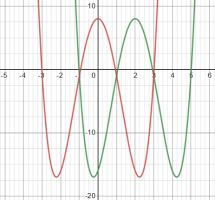
Green is the original quartic, which is symmetrical about x=2, and red is the new one, which is symmetrical about the y-axis. I think I let my thinking be affected by the suggestion of 4-x.
Sure, here it is:
View attachment 28623
l = 4, c = 1, y = ? (yes the figure inside is a square of side c)
So my solution relies on Pythagoras formula + simple relation between sides of two similar triangles. Would you solve it differently?
I would do something similar. My first thought, using just the variable y you show, is to write the proportion [imath]\frac{y+1}{4}=\frac{1}{\sqrt{y^2+1}}[/imath], which leads directly to the quartic [imath](y+1)^2(y^2+1)=16y^2[/imath]; that doesn't turn out to be symmetrical.
Looking at your equations, it appears that you took x to be the lower part of the hypotenuse l; if I used just that x, I'd have [imath]\frac{4-x}{1}=\frac{x}{\sqrt{x^2-1}}[/imath], which leads directly to the quartic [imath](4-x)^2(x^2-1)=x^2[/imath], which is yours.
So I'm just skipping the two-variable step. The symmetry of the problem makes it clear that there will be at least two solutions, because putting x for the upper part of the hypotenuse leads to the same equation. This also suggests (though I don't promise I'd notice it) that the solutions would be symmetrical about x=2. (That's not true of y.)
I know problems that look very similar that result in quadric equations, so I don't expect that there is a nice way to avoid that.


